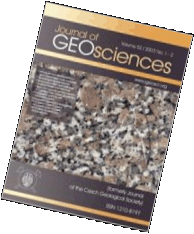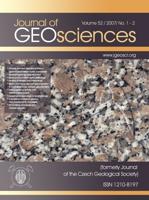Original Paper
Chemistry and mineralogy of orthogneisses at the northeastern part of the Moldanubicum
Journal of the Czech Geological Society, volume 50 (2005), issue 3-4, 81 - 94
DOI: http://doi.org/10.3190/JCGS.979
Two principal types of lower Palaeozoic orthogneisses were distinguished in the northeastern part of the Moldanubicum, Bohemian Massif, Czech Republic. Biotite orthogneisses are distributed in outer parts of the area, whereas leucocratic two-mica and muscovite-tourmaline orthogneisses form a SW-NE trending belt running through the entire area. All the rock types are peraluminous. The most fractionated two-mica orthogneisses are characterised by enrichment in boron, phosphorus, tin and tungsten and their chemical composition resembles tin granites. Typical mineralogical features comprise P-enrichment of both K-feldspar and albite, common occurrence of tourmaline (schorl) and occasionally phosphorus-enriched almandine-spessartine garnet. Zircon from fractionated orthogneisses is often zoned, and enriched in P, U, Al, Fe and Sc. Attempt to use monazite for age determination of magmatic precursor of orthogneisses was unsuccessful; all obtained ages are Variscan (316-327 Ma). Nevertheless, from whole-rock chemistry and similarities in mineral composition with the well dated Hluboka? orthogneiss it is possible to conclude that all studied rocks are products of one extensive lower Palaeozoic magmatic event, which was important in the northeastern part of the Moldanubicum. This magmatic event produced peraluminous magmas with source probably in metasedimentary formations. Near-minimum melting involving muscovite enriched the primary melt in boron. Successive fractionation led to enrichment in phosphorus and tin. The most fractionated products of this event form a discontinuous belt between the Blani?k hill in the southwest and Pr?ibyslavice in the northeast.
Webdesign inspired by aTeo. Hosted at the server of the Institute of Petrology and Structural Geology, Charles University, Prague.
ISSN: 1803-1943 (online), 1802-6222 (print)
email: jgeosci(at)jgeosci.org


IF (WoS, 2022): 1.4
5 YEAR IF (WoS, 2022): 1.8
Policy: Open Access
ISSN: 1802-6222
E-ISSN: 1803-1943
 Export to Mendeley
Export to Mendeley